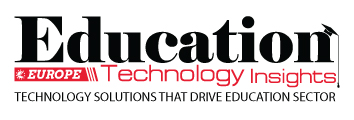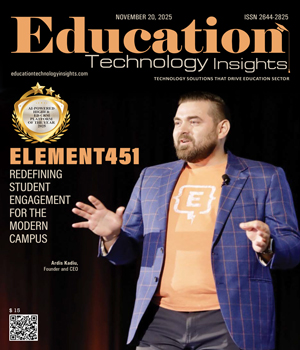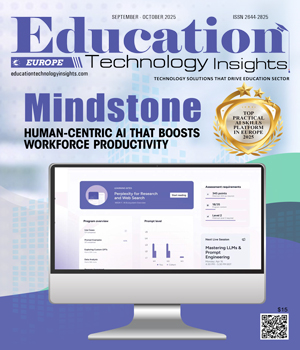THANK YOU FOR SUBSCRIBING
Be first to read the latest tech news, Industry Leader's Insights, and CIO interviews of medium and large enterprises exclusively from Education Technology Insights
Cultivating a Trust-Driven Technology Culture in K-12 Education
Charles Franklin, Assistant Superintendent of Technology & Information Services, Cypress-Fairbanks ISD
1. How do you define and cultivate culture within a technology organization, especially in a K–12 educational setting? Charles Franklin, Assistant Superintendent of Technology & Information Services, Cypress-Fairbanks ISD
Charles Franklin, Assistant Superintendent of Technology & Information Services, Cypress-Fairbanks ISD
In a K-12 setting, a strong technology culture begins with trust and the belief that people, not just tools, drive success. Those people are not limited to the technology department. Real progress occurs when business teams and technology teams collaborate with a shared purpose.
I define this culture as one where every team member, from technicians to directors, feels empowered to contribute to the district’s mission of serving students and educators. That empowerment comes from transparency, aligned goals, and leadership that values listening as much as directing.
At our core, technologists are naturally innovative. But innovation is not about chasing the next shiny object. It is about understanding where our stakeholders are and creating solutions that bring real value. Building these solutions requires trust. Stakeholders need to know we understand their needs and care about improving their work. They must feel involved in how they adopt and apply these solutions. Without trust, innovation cannot thrive.
In education, we support both instructional and operational needs. Leading with trust and involving everyone ensures innovation is not a top-down directive but a shared mindset embedded in who we are.
2. What foundational mindsets or behaviors do you believe are essential to maturing a technology department in a K–12 environment, and how do you promote those internally?
Maturing a technology department in a K–12 environment requires more than just upgrading systems; it demands a shift in mindset. It’s about evolving from a reactive support model to a proactive, strategic partner in education. That transformation begins with culture. It means instilling mindsets that support growth, adaptability, and service at every level.
One intentional strategy we’ve adopted is the creation of an acronym to reinforce the positive mindsets we want to cultivate: F.O.C.U.S. This represents five essential values: Forward-Thinking, Ownership, Customer-Centric, Unified, and Security-Centric mindsets. These aren’t just words on a poster; they show up in how we respond to tickets, how we approach projects, and how we collaborate across departments.
However, truly embodying these mindsets also means being willing to face hard truths. An organization cannot mature unless it is willing to audit its current environment, systems, skill sets, and service models, and acknowledge areas for improvement. This level of honesty and vulnerability creates space for real progress. True maturity comes from building a culture that prioritizes planning, intentional documentation, and long-term value over short-term fixes.
This kind of thinking requires a multi-year strategy, spanning five years and beyond, rather than relying solely on annual budgeting cycles. It challenges us to define what success looks like over time and to ensure that every initiative, policy, and investment is aligned with that long-term vision.
3. Culture often drives long-term success—how are you aligning culture with your goals for operational excellence, continual improvement, and service delivery?
There is a well-known saying often attributed to Peter Drucker: “Culture eats strategy for breakfast.” I have found this to be true because even the most well-crafted strategy will fail if the culture does not support it. Culture is the thread that connects everything: operations, innovation, and service. Without the right culture, even the most sophisticated systems or strategic plans will eventually falter. That is why we treat culture as an active lever, not a passive byproduct.
We are aligning culture with operational excellence by emphasizing clarity, consistency, and accountability. Teams need more than procedures. They need shared values, wellcommunicated expectations, and confidence that their work contributes to a bigger mission. A strong culture supports process discipline, documentation standards, and proactive problem-solving that scales across the organization.
“In education, we support both instructional and operational needs. Leading with trust and involving everyone ensures innovation is not a top-down directive but a shared mindset embedded in who we are”
When it comes to improvement, culture plays a crucial role in fostering psychological safety and promoting learning and growth. We celebrate wins while asking, “How can we make this better?” Failures are seen as learning opportunities. Cross-functional collaboration and the freedom to challenge the status quo encourage daily innovation. This foundation turns improvement into a habit and, ultimately, strength.
4. Looking ahead, how do you plan to evolve the technology culture over the next few years, and what indicators will you use to measure maturity, growth and cultural health?
Evolving our technology culture starts with recognizing that culture isn’t a one-time project; it’s a system that must be nurtured with intention. We’ve made significant progress by anchoring our values through initiatives like our F.O.C.U.S. mindset framework, but sustaining that momentum requires long-term commitment.
Over the next few years, we will be investing heavily in efforts that reinforce belonging, leadership, and shared accountability. This includes monthly newsletters that provide communication and a community connection, leadership focus through book studies, a management course, and intentional professional development opportunities at every level. We’ve also formalized employee committees, such as the Welcome Committee, Community Service Committee, and Hospitality Committee, to structure how we support one another, give back, and celebrate key moments across the department. We see culture as the foundation that promotes operational excellence and innovation.
To measure maturity and cultural health, we look at both qualitative and quantitative indicators.
Quantitative Metrics:
• User Satisfaction Scores: Regular surveys and help desk feedback will indicate whether our efforts are yielding tangible improvements.
• System Uptime & Performance: Directly reflects operational excellence and the impact of a strong Ownership mindset.
• Project Success Rates & Timeliness: Indicative of effective planning and customer engagement.
• Technology Adoption Rates: Tracking the adoption of new tools and platforms helps us understand ease of use, relevance, and perceived value across the district.
• Professional Development Participation: Tracking enrollment and completion rates for training programs, indicating a commitment to learning.
Qualitative Indicators:
• Employee Engagement Surveys: Anonymous surveys focusing on psychological safety, collaboration, empowerment, and alignment with district goals. We'll look for trends in how staff perceives their ability to innovate and take ownership.
• Internal Collaboration & Idea Generation: Observing the frequency and quality of cross-team initiatives and internal knowledge sharing. The number of unsolicited improvement suggestions or innovative project proposals from staff.
• Leadership and Team Behavior Observations: Regular checkins and performance discussions will assess how well leaders and team members are modeling F.O.C.U.S. behaviors. This includes observing how teams handle setbacks, adapt to changes, and engage with stakeholders.
• Retention and Recruitment: A healthy, mature culture fosters the retention of top talent and the attraction of new, aligned professionals.
Ultimately, our goal is to cultivate a culture that embodies the kind of technology department we aspire to be: one that is connected, empowered, and mission-driven. By keeping our people at the center of this work, we’re building more than just a high-performing team; we’re building a community.
Read Also
Goldilocks Regulation
Beyond the Quiz: Redefining Competence in eLearning
Beyond Theory and Into Monday Morning: Enhancing Graduate Programs for Teachers
Safeguarding Students in the Age of Deepfakes: An Educational Imperative
Delivering Excellence in Education through Transformative School Leadership
Curriculum Innovation for Student Success and Institutional Growth

I agree We use cookies on this website to enhance your user experience. By clicking any link on this page you are giving your consent for us to set cookies. More info

However, if you would like to share the information in this article, you may use the link below:
www.educationtechnologyinsightseurope.com/cxoinsights/charles-franklin-nid-3498.html





















